Enve M6 Wheels
Intended Use: Trail
Internal Width: 32 mm (front) / 29 mm (rear)
Versions Offered:
- Front: 29’’, Centerlock, 15 x 110 mm Boost only
- Rear: 27.5’’ or 29’’, Centerlock, 12 x 148 mm Boost or 12 x 157 mm Super Boost
Blister’s Measured Weights:
- M6 29’’ Front: 748 g
- M6 29’ Boost Rear (MS driver): 872 g
- Wheelset: 1,620 g
MSRP:
- M6 Front: $1,035
- M6 Rear: $1,265
- Wheelset: $2,300
Bolted To: BTR Ranger, Geometron G1
Reviewer: 6′, 160 lb / 183 cm, 72.6 kg
Test Locations: Washington
Test Duration: 7 months
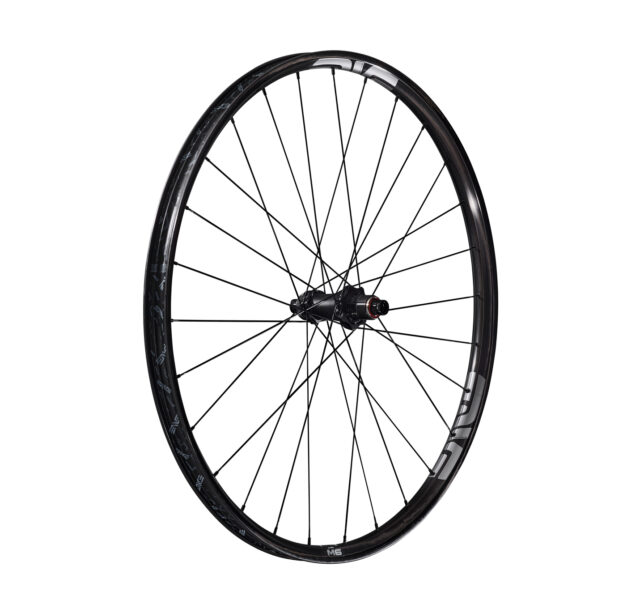
Intro
Enve’s now-prior-generation M-Series wheels had grown quite long in the tooth by the time the new fifth-generation versions rolled out in late 2024. As Enve’s VP of Product, Jake Pantone, laid out in Ep.243 of Bikes & Big Ideas, the evolution of bike design and rider needs over that time changed Enve’s design goals for the new wheels in a big way.
At the top of the list was dramatically reducing the stiffness of the new wheels in the name of increasing comfort, traction, and improving the overall ride feel. Enve’s stated stiffness numbers for the new Trail-oriented M6 wheels are pretty eye-popping — the rims are stated to be 50% less stiff vertically and 48% so laterally as compared to the M630 rims that they effectively replace. Furthermore, Enve claims that the M6 rims are 47% more impact resistant than the M630 ones, all while coming in at a nearly identical weight.
So has it worked? And how do the M6 wheels ride? I’ve spent the last seven months finding out.
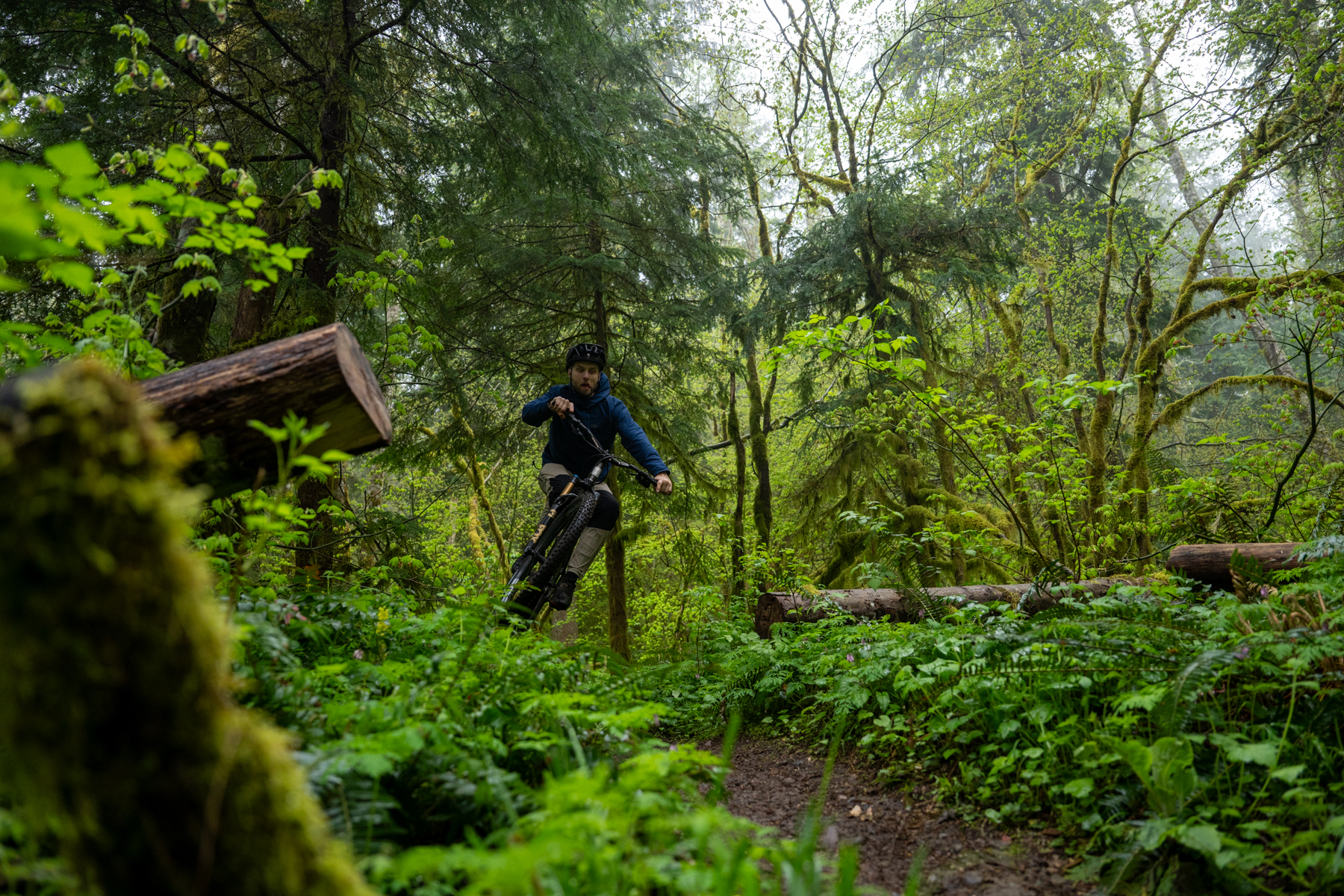
Design
We already covered the design of the M6 wheels (and their siblings) in our First Look on the new M-Series lineup, but we’ll recap it here. The M6 rims are made from carbon fiber in Enve’s Utah facility, with dedicated front and rear rims. The front is offered in 29’’ diameter only and features a 32 mm internal width with thick 4.2 mm bead walls for impact resistance and pinch flat protection, and a notably shallow 20.8 mm cross section depth. The rear rim shares the same 20.8 mm cross section depth and a similar-looking pinched profile, but is 29 mm wide internally, with 4.7 mm bead walls. The rear rim is offered in both 27.5’’ and 29’’ diameters. Both rims have the spoke holes molded in rather than drilled, which Enve says makes for a stronger rim since fibers aren’t being cut like they are in a drilling process. Unlike M-Series wheels of old, the M6 rims now feature standard external nipples.
The M6 wheels now feature Enve’s own Innerdrive hubs, rather than being offered with a variety of third-party options. The Innerdrive hubs use a star ratchet system with 80 points of engagement in stock form, with 40, 60, and 100-tooth ratchet rings offered separately. Both ratchet rings and the spring that drives them together are housed in the hub shell and retained with a snap ring so that there aren’t loose parts to spring free when taking the hub apart. The axle uses threaded end caps to hold everything together, with a wave spring automatically adjusting the bearing preload.
The versions of the Innerdrive hubs used in the M6 wheels come with Centerlock rotor mounts and straight pull spokes only; 15 x 110 mm Boost is the lone front axle option, while the rear comes in 12 x 148 mm Boost and 12 x 157 mm Super Boost versions.
Mounting & Installation
As is the case with most modern wheels, the M6 wheels didn’t offer any real surprises or challenges in mounting up a variety of tires over the test period. Rims with a less-than-dialed profile that makes mounting and seating tubeless tires challenging in one way or another are few and far between these days, and the M6 ones are no exception.
Ride Quality & Performance
Given how much Enve talks up the additional compliance of the new M6 wheels compared to the prior-generation M630 ones, I was very curious to see just how noticeable those changes are on trail. They’re not subtle.
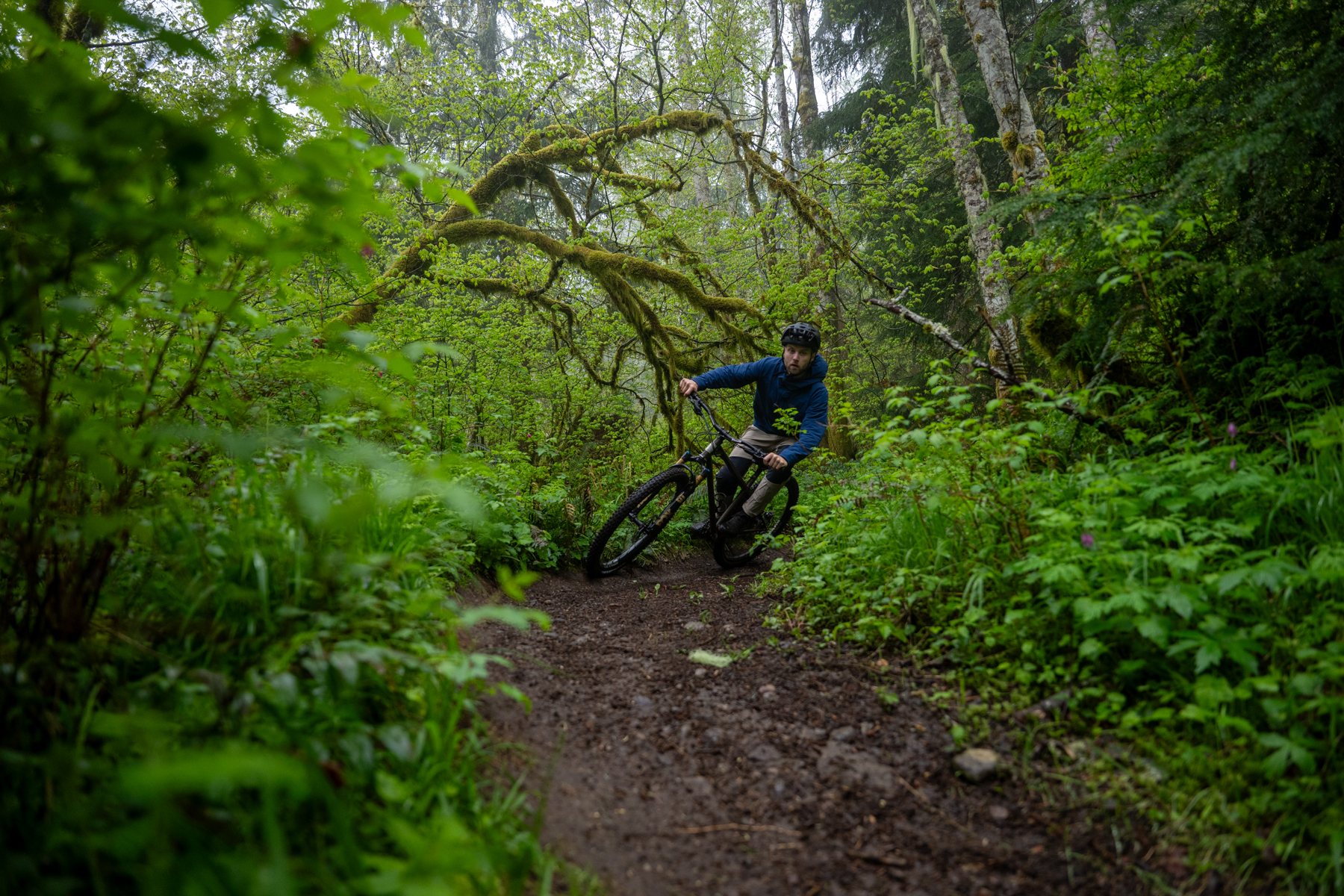
It’s been a minute since I rode a pair of M630 wheels, but I distinctly remember them being notably stiff; the new M6 wheels, on the other hand, are among the most compliant-feeling carbon wheels I’ve ridden to date.
That compliance is most noticeable over smaller chatter (think a big web of roots, for example). The M6 wheels just feel smoother and transmit less sharp feedback than most carbon wheels. But that’s not to say that they feel overly flexy, either. The M6 wheels still feel reasonably stiff laterally and track precisely — much more so than any aluminum wheel I’ve been on that’s even close to being as lightweight.
The compliance and smoothness that comes with it aren’t directly noticeable on their own; rather, they manifest as an absence of a lot of small chatter and feedback when riding the M6 wheels back-to-back with something stiffer. I’ve ridden plenty of wheels that feel obviously noodly and imprecise, but that’s not the case here. Especially on my BTR Ranger hardtail, where I did the bulk of the testing, their ride feel is particularly nice — the lack of suspension really highlights the feedback produced by stiffer, harsher wheels. That said, the M6 wheels also felt like a nice match on the Geometron G1, where I spent some time with them in the G1’s short-travel Trail bike mode.
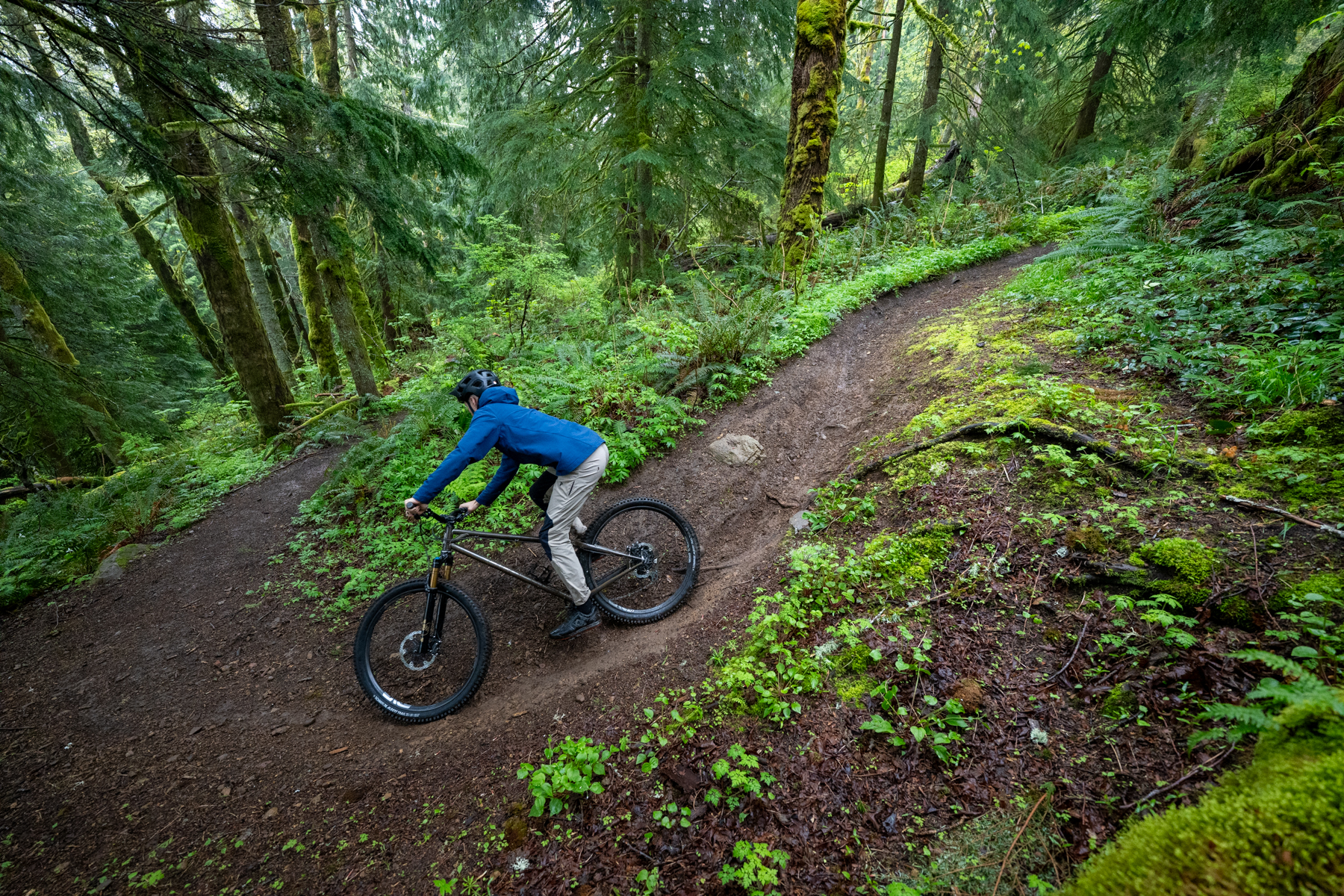
House-brand hubs sometimes carry a bit of a stigma — and there have been plenty of examples of bad ones over the years — but I’m impressed with Enve’s Innerdrive design. They roll relatively quickly, the build quality seems excellent, they’re easy to work on (more on that below), and the sealing is quite robust, especially on the freehub mechanism.
The one knock I have is that the stock 80-tooth ratchet is louder than I’d like. It makes a relatively pleasant sound — much less high-pitched and buzzy than an Industry Nine Hydra, for example — but they’re far from silent. Adding some grease to the ratchets only made a modest difference.
The optional 60-tooth ratchet, while still not ultra-quiet, is far more so than the 80-tooth one, and the 40-tooth version is a little quieter still (the difference between the 40- and 60-tooth ratchets is much smaller than that between the 60- and 80-tooth ones). As you’d expect, the tone also gets a bit lower and more rumbly as you step down in points of engagement.
The 60-tooth version hits the sweet spot for my preferences. I like that it’s much quieter than the 80-tooth version, and I don’t miss the extra 20 points of engagement at all. I’m happy riding the 40-tooth one, too, but the quicker pickup of the 60-tooth version can be nice in certain technical climbing situations, and the reduction in noise in going from the 60-tooth ratchets to the 40-tooth ones is fairly modest. Enve also offers a 100-tooth version for folks who’d prefer faster engagement and/or a louder hub. I haven’t tried the 100-tooth version, but Enve acknowledges that the higher engagement ratchets are louder, and that trend seems clear from the three variants that I tried.
Durability & Maintenance
Not much to report. I broke one spoke on the rear wheel by putting a large stick through it — not the wheel’s fault in the slightest. Enve includes a couple of extra spokes with the wheels, and between the straight pull lacing and the fact that the M6 wheels (mercifully) now use external nipples, replacing it was quick and easy.
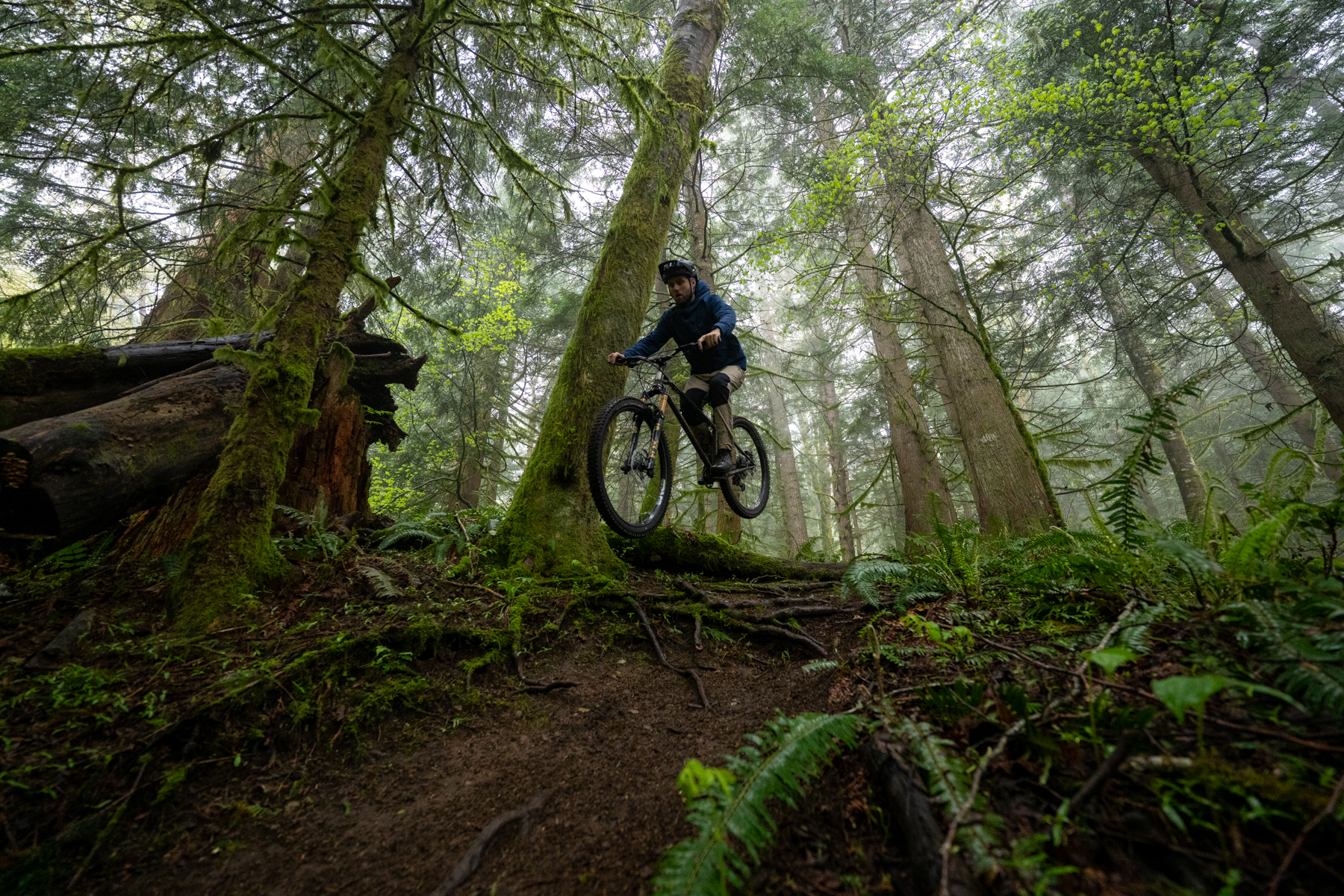
Other than that self-induced mishap, I haven’t needed to touch the M6s. They’re still true and round, the bearings are in great shape after a wet winter season here in Western Washington, and the freehub sealing seems quite robust, too — things are still impressively clean in there.
I’m a big fan of the Innerdrive hubs from an ease-of-service standpoint. The axle is secured with thread-on end caps, so there’s no need to wrestle with sometimes sticky push-on ones; the ratchet rings and spring are self-contained but still easy to remove if needed; and by all appearances, removing and replacing the bearings should be quite straightforward when the time comes.
Bottom Line
Enve’s M-Series wheels have historically been very, very stiff and rode somewhat harshly for it, but they’ve flipped that around with the new M6 wheels — the M6s are notably compliant, smooth-feeling Trail bike wheels at a competitive weight. They’re also cheaper and easier to live with (e.g., the switch to external nipples) than M-Series wheels of old, while still being made in the US, and their Innerdrive hubs that help facilitate the reduced price are also quite good. If you’re after a light, smooth-riding Trail bike wheelset and have the budget for the M6 wheels, they’d be high on my list of recommendations.

Comp to F+B AM30?
DSL,
While I cannot comment on F+B, I can comment on AM30. The AM30 is a very different wheel from the M6. While the AM30 is similar dimensions, it is designed for more aggressive terrain and riding than the M6. Essentially, the AM30 is closer to an M8 than an M6 in terms of stiffness, weight, and toughness.
Good info. Thank you, Jake!
Just to clarify, Jake is talking about the Enve AM30, not the F+B 30 AM.
Compared to the M6, the 30 AM feels a little less stiff laterally and a touch more so vertically; the bigger difference is that the 30 AM feels more muted/damped while the M6 is a bit more lively and energetic.
Okay, gotcha. Thanks David! Sorry I got the names mixed up.